
Revista de Teledeteccion
Scope & Guideline
Unlocking the potential of remote sensing methodologies.
Introduction
Aims and Scopes
- Remote Sensing Applications:
Focus on the application of remote sensing technologies for monitoring various environmental parameters such as land use, vegetation cover, and water resources. - Data Integration and Analysis:
Emphasizes the integration of remote sensing data with ground-based measurements and other datasets to enhance the accuracy and reliability of environmental assessments. - Machine Learning and AI Techniques:
Utilizes advanced machine learning algorithms for classification, prediction, and analysis of environmental data, showcasing the journal's commitment to innovative methodologies. - Environmental Impact Studies:
Investigates the effects of human activities and climatic changes on natural ecosystems, addressing critical issues like urban expansion, deforestation, and water management. - Geospatial Modeling and Assessment:
Involves the development and application of geospatial models to understand complex environmental processes and inform policy decisions.
Trending and Emerging
- Machine Learning for Environmental Monitoring:
There is a growing emphasis on the use of machine learning techniques for environmental monitoring, as seen in studies applying classification algorithms to various datasets, indicating a trend towards more sophisticated analytical methods. - Integration of Google Earth Engine:
The adoption of Google Earth Engine for data processing and analysis is increasingly prevalent, showcasing a trend towards utilizing cloud-based platforms for large-scale environmental assessments. - Climate Change Impact Assessments:
Research focusing on the impacts of climate change, particularly on water resources and vegetation dynamics, has gained prominence, reflecting the urgency of addressing environmental sustainability. - High-Resolution Remote Sensing:
The trend towards utilizing high-resolution satellite imagery and UAV data for detailed environmental analyses is evident, indicating a shift towards precision in remote sensing applications. - Spatiotemporal Analysis of Environmental Changes:
Emerging studies are increasingly adopting spatiotemporal approaches to analyze environmental changes over time, indicating a shift towards understanding the dynamics of ecosystems rather than static assessments.
Declining or Waning
- Traditional Remote Sensing Techniques:
There has been a noticeable decrease in the publication of studies focused solely on traditional remote sensing techniques, as researchers increasingly adopt more sophisticated approaches such as machine learning and AI. - Local Case Studies:
Research focusing exclusively on specific local case studies without broader implications or applications has become less common, possibly due to a growing emphasis on regional or global analyses. - Static Environmental Assessments:
The journal has seen a decline in papers that provide static snapshots of environmental conditions, reflecting a shift towards dynamic and temporal analyses that consider changes over time. - Basic Land Cover Classification:
Basic methodologies for land cover classification without the integration of advanced algorithms or remote sensing innovations have diminished, as researchers pursue more complex and data-driven approaches.
Similar Journals
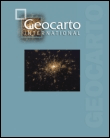
Geocarto International
Connecting Researchers and Practitioners in the Geospatial CommunityGeocarto International is a premier peer-reviewed journal published by Taylor & Francis Ltd that focuses on the intersection of geography, planning, and environmental science, offering valuable insights into emerging research trends and methodologies within these fields. With an impressive impact factor, the journal is consistently recognized for its contributions, ranked in the Q1 category for Geography, Planning, and Development as well as Q2 in Water Science and Technology as of 2023. Geocarto International not only showcases high-quality research articles but also embraces Open Access publishing since 2023, promoting accessibility and fostering a global dialogue among researchers, professionals, and students. Spanning over three decades from its inception in 1986 to 2024, the journal continues to serve as an essential platform for disseminating knowledge, advancing scholarly communication, and addressing crucial environmental challenges across the United Kingdom and beyond. Explore the latest advancements and contribute to the dynamic discussions shaping the future of geography and environmental sciences through Geocarto International.

Geographia Technica
Pioneering Insights into Socio-Environmental InteractionsGeographia Technica is an esteemed academic journal published by GEOGRAPHIA TECHNICA ASSOCIATION - GT Assoc in Romania, serving as a vital platform for the dissemination of cutting-edge research in the interdisciplinary fields of geography, planning, and earth sciences. Since its inception in 2009 and continuing through to 2024, the journal has established itself as a respected source of knowledge, reflected in its classification within the Q3 category across significant fields such as Computers in Earth Sciences, Earth-Surface Processes, and Geography, Planning and Development. With the ambition to enhance the understanding of socio-environmental interactions and technological applications in these areas, Geographia Technica invites scholars and practitioners to contribute original research that pushes the boundaries of current knowledge. Although currently not listed as open access, the journal's engaging content ensures it remains a valuable resource for researchers, professionals, and students keen on advancing their expertise in these dynamic disciplines.

Frontiers in Remote Sensing
Elevating research standards in Physics, Astronomy, and beyond.Frontiers in Remote Sensing is an innovative open-access journal published by FRONTIERS MEDIA SA, dedicated to advancing the field of remote sensing through high-quality research and groundbreaking studies. Launched in 2020, this journal has quickly established itself as a pivotal platform for scientists and researchers working in the spheres of Physics and Astronomy and Biochemistry, Genetics, and Molecular Biology. With impressive rankings in Scopus, including a 68th percentile standing in Physics and Astronomy, it provides a vibrant forum for discussions on new methodologies, applications, and technological advancements in remote sensing. The journal is committed to facilitating knowledge dissemination by providing fully open access to its content, ensuring that useful scientific insights are readily available to a global audience. As it converges towards its initial evaluation period (2020 to 2024), Frontiers in Remote Sensing aims to solidify its role as a key resource for researchers, professionals, and students looking to innovate and excel in this dynamic field.
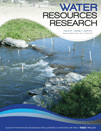
WATER RESOURCES RESEARCH
Driving Impactful Discoveries in Water ResourcesWATER RESOURCES RESEARCH, published by the American Geophysical Union, stands as a premier journal in the field of environmental science, specifically within the domain of water science and technology. With an impressive impact factor and a categorical ranking of Q1 for 2023, it ranks within the top 10% of relevant journals, evidencing its critical role in advancing the knowledge and application of water resources research. Since its inception in 1965, the journal has been dedicated to rigorous research that addresses pressing global challenges related to water resource management, hydrology, and environmental sustainability. The journal's comprehensive publication scope aims to present innovative findings and methodologies that can shape effective policies and practices. Although it does not offer open access, the robust research it publishes continues to influence academics and practitioners alike, ensuring its position as an essential resource for anyone engaged in the pursuit of water-related knowledge and solutions.
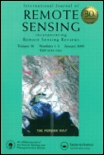
INTERNATIONAL JOURNAL OF REMOTE SENSING
Advancing Knowledge in Remote Sensing for Global ImpactInternational Journal of Remote Sensing, published by Taylor & Francis Ltd, stands at the forefront of Earth and Planetary Sciences, providing a critical platform for disseminating pioneering research since its inception in 1980. With an impressive ranking of #25 out of 195 in general Earth and Planetary Sciences and a notable 87th percentile on Scopus, this journal is recognized for its high-quality contributions that span diverse topics including satellite imagery analysis, geospatial technologies, and environmental monitoring. As a Q1 journal in its field for 2023, it offers invaluable insights and methodologies that are essential for researchers, professionals, and students alike. Although not Open Access, the journal facilitates a comprehensive understanding of remote sensing sciences, ensuring that the scholarly community remains updated with the latest advancements, trends, and applications that impact global challenges.
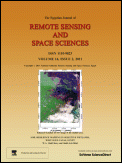
Egyptian Journal of Remote Sensing and Space Sciences
Fostering Global Collaboration in Earth and Space StudiesThe Egyptian Journal of Remote Sensing and Space Sciences, published by Elsevier, is a premier open-access journal dedicated to advancing the fields of Remote Sensing and Space Sciences. Since its inception, the journal has gained a prominent reputation, currently holding a prestigious Q1 ranking in Earth and Planetary Sciences and placing within the top 10% of its field according to Scopus metrics. With an ISSN of 1110-9823 and an E-ISSN of 2090-2476, the journal features a diverse range of scholarly articles that explore both theoretical and practical aspects of remote sensing technologies and space science innovations, thus appealing to researchers, professionals, and students alike. Established in 2003 and fully transitioning to an open-access model in 2010, the journal aims to disseminate knowledge and foster collaboration across the globe by providing wider accessibility to groundbreaking research findings. Its commitment to quality and innovation is a catalyst for intellectual development in these dynamic and evolving disciplines.
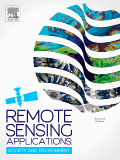
Remote Sensing Applications-Society and Environment
Transforming data into action for a healthier planet.Remote Sensing Applications-Society and Environment, published by Elsevier, stands at the forefront of interdisciplinary research, bridging the fields of remote sensing and environmental science. With an impressive impact factor and recognition within the Q1 quartile in both Computers in Earth Sciences and Geography, Planning and Development, the journal is a vital resource for researchers, professionals, and students committed to advancing our understanding of environmental dynamics through innovative remote sensing technologies. Since its inception in 2015, this journal has cultivated a rich repository of knowledge, addressing pertinent societal and environmental issues, making it a leading source for transformative applications in the field. Accessible and relevant, articles published here not only explore theoretical advancements but also practical implications, ensuring research findings are effectively disseminated to stimulate further inquiries and applications in sustainability and ecological stewardship. The journal's strong Scopus rankings, particularly within its categories, solidify its role as an essential platform for scholarly exchange.
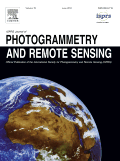
ISPRS JOURNAL OF PHOTOGRAMMETRY AND REMOTE SENSING
Advancing Geospatial Sciences through Innovative ResearchISPRS Journal of Photogrammetry and Remote Sensing is a prestigious publication at the forefront of the fields of photogrammetry and remote sensing. Established in 1989 and published by Elsevier, this journal has consistently maintained a strong academic standing, currently holding a top-tier Q1 ranking across multiple categories, including Atomic and Molecular Physics, Computer Science Applications, and Engineering. This reflects its vital contribution to advancing knowledge and technology in these dynamic fields. The journal is not only a vital resource for researchers and professionals but also serves as an essential academic platform for students keen on delving into the latest developments in geospatial sciences. The journal operates under a non-open access model, ensuring that submitted research adheres to the highest standards of scholarly communication and integrity. With an impactful focus, it brings innovative research, comprehensive reviews, and significant case studies to a global audience. The ISPRS Journal is crucial for those aiming to enhance their understanding and application of remote sensing techniques within various scientific disciplines.

Remote Sensing
Bridging Earth Science and Technology for a Sustainable FutureRemote Sensing is a highly esteemed journal published by MDPI, dedicated to the domain of Earth and Planetary Sciences. With an impressive impact factor reflected in its rank of #16 out of 195 in the general Earth and Planetary Sciences category, this journal achieves a commendable 92nd percentile among its peers, indicating its significant contribution to the field. Since its inception in 2009 as an Open Access journal, it has enabled researchers, professionals, and students from around the globe to access high-quality, peer-reviewed articles that delve into the latest advancements in remote sensing technologies, methodologies, and applications. Based in Switzerland, Remote Sensing serves as a vital platform for disseminating innovative research that supports and enhances our understanding of Earth's processes and environments, ensuring scientific knowledge remains freely accessible and impactful.
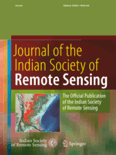
Journal of the Indian Society of Remote Sensing
Illuminating the Path of Remote Sensing ResearchJournal of the Indian Society of Remote Sensing, published by SPRINGER, stands as a prominent contribution to the fields of Earth and Planetary Sciences and Geography, Planning and Development. With an ISSN of 0255-660X and an E-ISSN of 0974-3006, this esteemed journal has been in circulation since 1973, showcasing a rich repository of research and advancements in remote sensing applications, methodologies, and technologies, specifically within the Indian context and beyond. The journal's impact is underscored by its placement in the Q2 category of both Earth and Planetary Sciences and Geography as of 2023, ranking impressively in the Scopus database with significant percentiles. With the intent to bridge the gap between theory and practical application, it invites scholars, researchers, and professionals to contribute innovative studies that enhance our understanding of remote sensing and its implications in various domains. The Journal of the Indian Society of Remote Sensing is a vital resource for anyone looking to remain at the forefront of research in this dynamic field.